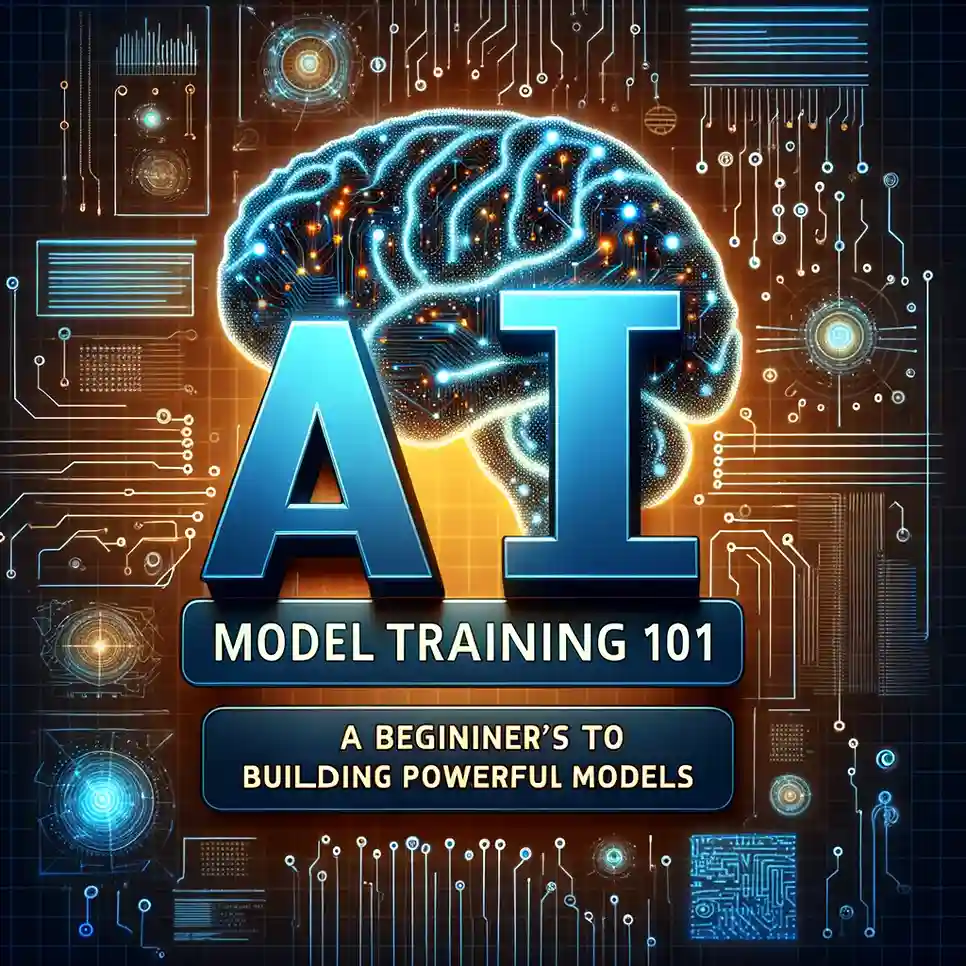In the exciting world of Artificial Intelligence (AI), model training is the cornerstone of creating intelligent systems. It’s the process that equips AI models with the ability to perform specific tasks, from recognizing faces in photographs to predicting stock market trends. This guide delves into the fundamentals of AI model training, making it accessible for beginners.
What is AI Model Training?
Imagine a child learning to ride a bicycle. Through trial and error, they grasp the concept of balance, pedaling, and steering. Similarly, AI model training involves feeding a model vast amounts of data, allowing it to learn and improve its ability to perform a specific task. This data can be text, images, videos, or any other format relevant to the desired outcome.
There are two main types of AI model training:
- Supervised Learning: The model is presented with labeled data, where each data point has a corresponding answer. For example, an image recognition model might be trained on pictures labeled “cat” or “dog.” By analyzing these labeled examples, the model learns to identify similar patterns in unseen data.
- Unsupervised Learning: Here, the data is unlabeled, and the model identifies patterns and relationships on its own. This approach is often used for tasks like anomaly detection or data clustering.
Unveiling the Power of Trial and Error: Gradient Descent
One of the most common training methods in AI is called Gradient Descent. This technique works by iteratively adjusting the model’s internal parameters to minimize its error. Here’s a simplified analogy:
Imagine you’re lost in a maze. Gradient Descent helps the AI model navigate by constantly evaluating its position and making small adjustments (like taking a different turn) to get closer to the exit (the desired outcome). With each iteration, the model refines its approach, ultimately reaching the optimal solution.
Deep Dive into AI Model Training
“The ability to train large models that can learn from data is a fundamental breakthrough in computer science.”
– Andrew Ng, AI Pioneer
- Data Preparation: High-quality data is the fuel for effective AI models. This stage involves cleaning, organizing, and labeling data to ensure its accuracy and relevance for the training process.
- Choosing the Right Model Architecture: Different AI models are designed for specific tasks. Selecting the appropriate architecture, like a Convolutional Neural Network (CNN) for image recognition, is crucial for optimal performance.
- Training and Evaluation: The model is exposed to the prepared data, constantly learning and improving. Evaluation metrics help measure the model’s effectiveness and identify areas for fine-tuning.
- Deployment and Monitoring: Once trained, the model is deployed in a real-world setting. Continuous monitoring ensures its performance remains optimal and adapts to changing data patterns.
Optimizing Your Training Process
- Addressing Bias: Training data can reflect real-world biases. Techniques like data augmentation and fairness checks help mitigate this issue.
- Overfitting and Underfitting: Overfitting occurs when the model memorizes the training data too well, hindering performance on new data. Underfitting signifies insufficient learning. Finding the right balance is key.
- Regularization Techniques: These methods prevent overfitting by adding constraints to the model, encouraging it to learn generalizable patterns.
“AI is the new electricity. It will power the future.”
– Ginni Rometty, Former IBM CEO
Frequently Asked Questions (FAQ)
Training time can vary significantly depending on the model complexity, data size, and computational resources.
Several user-friendly platforms offer pre-built models and visual interfaces for training with minimal coding required.
Bias in training data can lead to discriminatory outcomes. Responsible development practices are crucial to mitigate these risks.
AI models trained for tasks like medical diagnosis, fraud detection, and self-driving cars are transforming various industries.
Numerous online resources, tutorials, and courses can equip you with the knowledge to delve deeper into this fascinating field.
Conclusion
AI model training is a powerful tool for building intelligent systems that are revolutionizing various aspects of our lives. By understanding the core concepts and best practices, you can embark on your journey to train and deploy effective AI models, shaping the future alongside these remarkable technologies.
Read Also: How to Establish an Online Language Tutoring Business in Australia


































